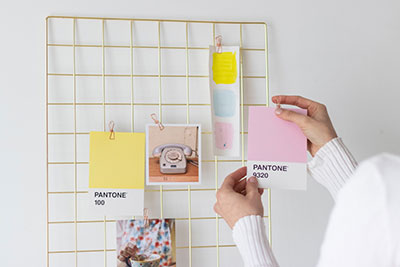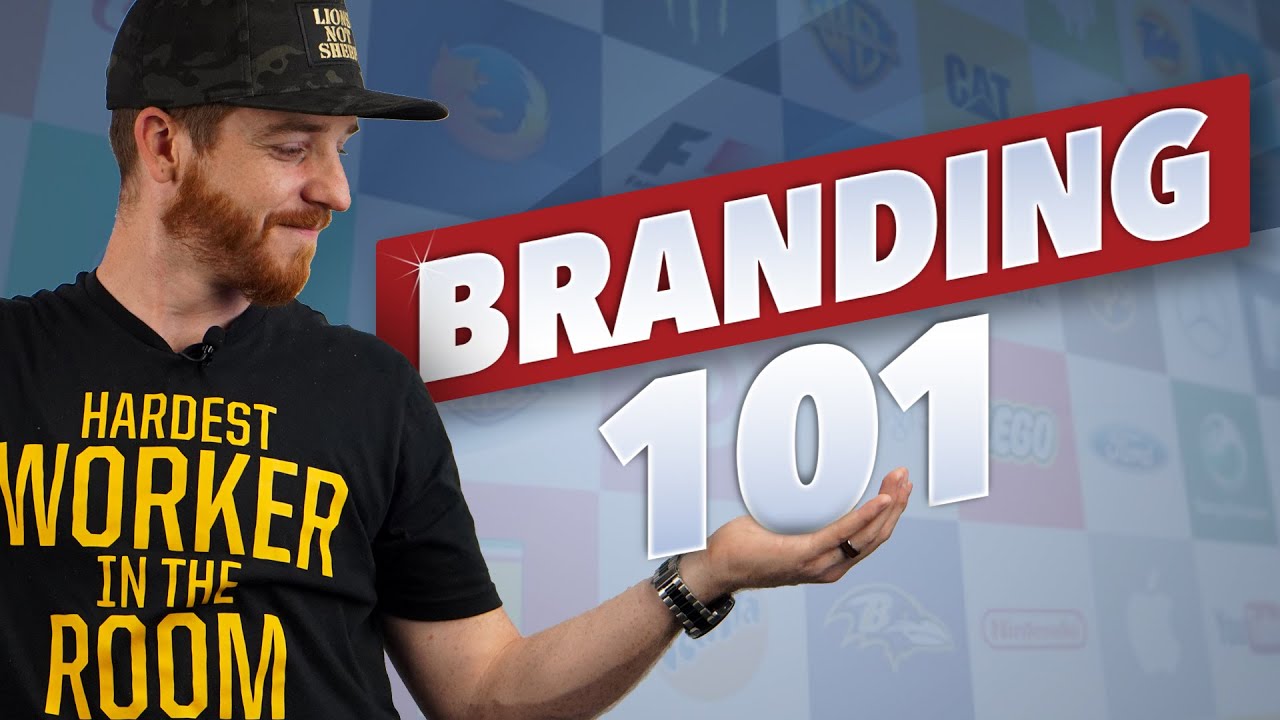
When it comes to branding for business, there are a lot of things to take into account. The concept of branding for business is so much more than just a logo – it’s the entire look and feel of your company, from your website to your marketing materials. And if you want to be successful, you need to make sure that your branding is on point. That’s where the 21 Laws of Branding come in. These laws will help you create a clear and consistent brand that stands out from the competition. So if you’re ready to learn about branding, read on!
What Is Branding for Business?
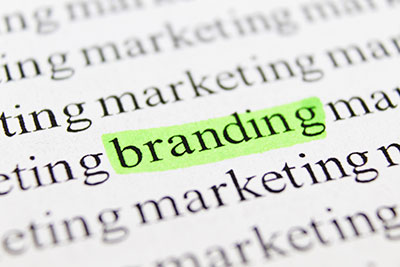
Why Branding Is Important
Now that you know what branding for business is, you might be wondering why it’s so important. Branding in design is important because it can help your customers understand what your business does and what makes you different from other businesses in your industry. Branding also helps build trust with your customers and creates a sense of loyalty. Finally, branding can help increase sales and grow your business.
Introduction to The 21 Laws Of Branding for Business
Now that you know the basics of branding, let’s dive into the 21 Laws of Branding for Business. These laws are essential to creating a successful brand identity for your business. This is going to be an important article for you to understand branding – personal branding or business branding. And the more you apply this to your business, the more success and clarity you’re going to have. So let’s go ahead and jump right into it.
#1 Law of Expansion
The first law is the law of expansion: brands become weaker as they expand. A good example of this is as you try to add more services to be able to make more money, people start to not know who you are and what you specialize in. You want to focus your brand on one category, like my wife for example, who I’m going to use throughout this article with her brand Crunchy Cottage.
She created a tribe and created a brand that focuses on one category: immune support. Not just immune support, but for who her target client is: crunchy moms. So Crunchy Cottage one appeals to crunchy moms, but two to moms who care about their child or their own immune systems. This is a good example of being specific and being focused, which we’re going to talk more about here in some of these other laws.
#2 Law of Singularity

So what she creates are products that surround that focus on immune support, from detox baths to elderberry syrup to fire cider. There are multiple products that all focus on immune support; this gives her range and flexibility without taking her into a new category. So you want to make sure you’re focusing on a singular category.
#3 Law of Publicity
The third law is the law of publicity. Not all publicity is bad publicity. You want to be the first in your field, so as far as I’m concerned, Crunchy Cottage–using that keyword of “crunchy”–Whitney and Crunchy Cottage are the first of her category. And so she’s able to create more publicity around what she’s doing for crunchy moms. She’s created a lot of momentum on social media because there are not a lot of people out there talking about immune support and how to boost your immune system during pandemics and difficult times, and actually how to raise it naturally without using supplements that are man-made and contain chemicals. So crunchy moms know who she is, she’s built a huge following, so she’s been able to be the first in her field of doing that with the law of publicity.
The only “bad publicity” is NO publicity. For example, the TV show Married with Children back in the late 80s and early 90s was getting a lot of flack from women because it was all about chauvinism and people had a really huge fuss about that. And so they went on to the news and started talking badly about the TV show Married with Children. Because of all that complaining, Married with Children became a hit TV show and made the mainstream media. It became just a massive sensation across the country because of the bad publicity. So, sometimes negative publicity can actually work in your favor, but getting publicity for your brand and being the first inside of your micro niche is going to be really, really important for you.
#4 Law of Advertising
The fourth law is the law of advertising. This goes similar to the law of publicity, but this is a little bit different. In advertising, you need to defend your gains in the marketplace – what I like to consider your market share. The more market share you can take from your competitors, the more money you’re going to make, and you can only do that by marketing and advertising. The people who spend the most amount of money on advertising are typically the ones who have the most amount of market share. You can look at Coca-Cola and Pepsi, as well as Apple, among others. The ones who are dominating are spending the most amount of money.
My brother is a very good example of this. He has a home improvement company and he was able to take his home improvement company and started spending 30 to 40,000 a month his very first month. None of his competitors in our area were spending that kind of money. Because of that, he was able to scoop up a ton of the business. Because a lot of businesses during the beginning of the pandemic were cutting back on their advertising and cutting back on their workforce, he doubled down and spent more money than they did. So because of that, when people were searching to get home improvements done on their houses during the pandemic, he was at the top of the list.
They were seeing him everywhere, so you need to defend your gains. But also, you need to be able to take market share from your competitors by spending money on advertising. You have to think bigger there, and so one of the things you need to be thinking about is being motivated by being the best in your category. People have a natural psychological reaction to seeing you everywhere and seeing you at the top of the list. They’re going to automatically think you’re the best because you’re spending the most amount of money. This is not necessarily true because there are people out there that do terrible work and spend a lot of money. However, it just goes to show you that if you spend money on advertising, even if your work is terrible, you can still have a lot of business. Now, your reputation and what that’s going to look like on the back end is a completely different thing.
#5 Law of The Word
The fifth law of advertising is the law of the word. This is the essence of your brand owning a word association. So let’s bring it back again one more time to Crunchy Cottage. When you hear the word “crunchy” and the word “cottage,” if you’re a woman, especially a crunchy woman, you’re going to know exactly what that means: cloth diapers, natural ingredients, natural detergents, etc. You’re not using fake or artificial products, and you’re probably not going to let anybody put toxic or poisonous vaccine-type chemicals into a vaccine in your child’s body. You’re just not going to have that type of mindset – not that that’s a bad thing, but that’s what crunchy moms are all about.
And so, having the word ‘crunchy’ in her name has given her a word association with her brand. Everybody knows what she stands for; she’s created what we call an archetype. An archetype is the type of character that you are. There are 12 different ones, but we don’t have time for that today. But we’ll get into that in another article. This is a really important topic. When she’s on social media, whether it’s videos, written memes, or anything else she posts, everything is about being crunchy. She never has to deviate from that, because that is the word she “owns”.
#6 Law of Category

That is the category that she wants to expand and that’s why she’s willing and excited to work with her competitors, who also work in the immune support field, because we need to bring more awareness to the world about how important your immune system is and how you can improve it. It helps the whole industry as a whole, it helps more people, and that’s really the outcome of a good brand: helping the industry and helping people. So that’s really what you want to be doing and what you want to be focusing on is helping people realize that immune support is incredibly important.
However you do that – whether it’s with competitors on your own or through advertising – that is the really the big outcome you want. And just another example of this is a pizza place. Domino’s Pizza is not as successful as it is because they make the best pizza in the world. They don’t make the best pizza in the world, they make good pizza. But what Domino’s Pizza does is they bring pizza to your house. That is the category that they are so you want to really hone in on your category.
They are a pizza delivery company. They are the people who are going to bring the pizza right to your front doorstep for you, and that is why they’re successful and why they’ve been able to rebrand as not just Domino’s Pizza, but Domino’s because now they can expand upon their category of food delivery – it’s not just pizza delivery now, it’s wings and pasta. There are all kinds of other things that they have so you can grow your category when you focus in on it more and you can end up having more products to sell than just pizza. So I wanted to give you guys that as well.
#7 Law of Fellowship
The seventh law is the law of fellowship. I touched on this briefly but it’s really important. We have people that we’ve tried to collaborate with on a Crunchy Cottage many times. It’s because my wife and I have helped her grow that brand and create that brand. So we’ve put a lot of time and energy into it, and there have been multiple people that we’ve been able to collaborate with to really grow her category. But there are some people that just refuse to want to work with us, even though they’re in the same category.
There are people out there that refuse to help because, at the end of the day, they see us as competition. However, helping people is what’s most important, and if you’re so worried about your competition, you’re not willing to collaborate and have fellowship with them in order to figure out how you can make your industry better and serve more people – then that’s a shame. The law of fellowship exists to help more people, and that’s what we’re in business to do.
It doesn’t matter if some of the business goes to your competitors if your industry grows by 50 percent because you’re collaborating – everybody’s going to make more money, including you. So this scarcity mindset is really an unhealthy mindset to have in your branding. You need to be thinking from an abundance mindset and how you can collaborate and help other people and expand your industry/category to help reach more people and impact more people.
#8 Law of Credentials
The eighth law is that of credentials and quality. Credentials are something where you need to be using social proof, so reviews, video testimonials, written testimonials, recommendation letters, recommendations on LinkedIn – there are many different ways that you can build your credentials, including case studies. These are very very important ways that you need to be building your credentials and showcasing your product.
The quality of your product will speak for itself if somebody drinks or tastes or eats or goes in experiences dealing with you one-on-one and they’re not happy; that is a pure indicator of the quality of the service or the product that you provide. When someone tastes Crunchy Cottage elderberry syrup, they will hands-down know the moment they take it that it is the best elderberry syrup they’ve ever tried in their entire life.
Not only do they have the reviews to back it up, but we also have the product quality in itself. So your credentials are the quality of your product or your service, as well as what people are saying about it in video testimonials, written reviews on Google reviews, and anywhere that people are talking about your brand – even in in-person events. This is a really, really important piece of your brand.
#9 Law of Quality

So there are three things that we typically tell people: quality, service, and price. If you’re going to be the most affordable, they can’t expect the highest quality, but you can still have a good product. But if you have the fastest or the cheapest price out there and you’re able to get into more people’s hands, that is valuable to people. So just focus on that: make sure that you’re offering quality service or products, or both if you can do both. And great! But you want to make sure you have a high-quality product, even if you can’t deliver it fast or if you don’t have the cheapest price. You can flip-flop that and give it for the cheapest price, but you still have a good quality product. That’s what’s going to help you stand out from everybody else.
#10 Law of Extension
The 10th law is the law of extension. Line extensions are adding other products and services to your lineup. This is something I’ve touched on a little bit again with the elderberry syrup – a natural product and a direction to go for immune support. As a probiotic, that is a law of extension that is an extension that we added to the business. My wife has recently also added another extension to the business with the anxiety supplement. Your health is very, very important.
So, your mental health and anxiety will keep you from living the life that you want. So she was able to add not just an immune support product, but now she’s adding some mental health stuff with anxiety and sleep. Without a good night’s sleep and with bad anxiety, you’re going to struggle. So she wanted to create some line extensions to her product that took beyond just the immune support. And so she’s now beginning the process of growing her product and growing her service.
It’s really important that you consider if you’re doing graphic design or if you’re doing web design. You can add a line extension like business card design, print design, or vehicle graphics. There are all types of extensions that you can add to your business that are going to end up serving your customers at a higher level. When I first started my business doing printing, I started by doing graphic design and printing. That was it; those were the only two things I did.
Then, as more people came in, they started saying, “I need signs. I need vehicle graphics.” And we added those lines in. The next thing you know, they said, “Well, I need to help my business online because online’s becoming important.” Then we added web design. These are called line extensions. And something that you should be considering adding to your business as well if you want to make more money and serve more people.
#11 Law of Consistency
The 11th law is a big one. This is probably the one that I’ve had to work on the hardest, and that’s the law of consistency. Speaking about these articles that I do here on YouTube alone, the more you show up and the more consistent you are, the more value that you bring day after day, week after year. There’s a saying: “done is better than perfect.” If you look at the first video that I did on YouTube to my videos now or any of the training videos that I’ve done to my articles now, you’ll see that I’ve improved over time.
Once you get to 100, 200, or 300 videos, you’ll start to see the difference. It’s just like working out at the gym – you show up every day and you show up for a week, every day you’re not going to see huge results. But if you show up every day for 365 days, you’re going to start to see huge results. Now, if you do that year after year, that consistency is going to help you improve your skills and improve how customers see you in your brand overall.
#12 Law of Sub Brands
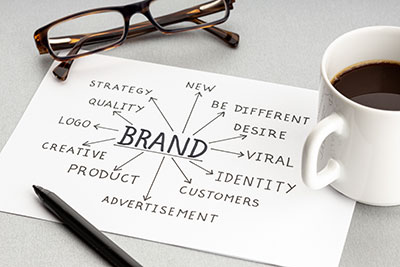
This was a natural extension of the former Adrian Agency (now Adrian Agency) brand, because we could make some extra money on domain names and hosting. That’s what we’ve been doing, so I want to encourage you to start working on creating other sub-brands underneath your main brand. Don’t just focus on graphic design or web design – there are areas where you can make more money by creating a sub-brand from your main brand.
#13 Law of Siblings
The 13th law is the law of siblings and creating a family of brands, so we have a sibling brand called LeadButler.io. People saw us having a lot of success and we were seeing a lot of success on LinkedIn, so we decided to create a tool that was specifically designed for LinkedIn called Lead Butler and Lead Butler Connect. And so now we’ve started to develop other brands outside of the Adrian Agency brand, Adrian Domains, that would allow us to have other properties that we could build and other services that we could offer to our clients that weren’t connected to our main brand.
We have multiple brands now. We even have home improvement companies with stakes and ownerships in them. This is what you can do as well if you’re really good at marketing or graphic design. You can start to get equity and ownership in other companies and add those as part of your family of brands. This is a really important piece you see big companies like Johnson and Johnson and all these other companies actually creating that. Coca-Cola is probably one of the biggest companies around. They have a ton of sub-brands and sibling brands under them, including energy drinks like Monster. I mean, the list goes on and on, so I want you to consider making sub brands and also having some family brands.
#14 Law of Borders
The 14th law of branding is the law of borders. This is a really big area, most people just focus on their backyard. And that’s really important to do in the beginning – you want to own your own backyard. But as you own your backyard, you want to start expanding into other geographical areas. For example, we’re starting to move into Texas. We’re starting to move into Oklahoma, where I have some of my team located. we’re starting to move into the East Coast a little bit. We’re not just reaching into our local backyard, but we’re moving into other geographical regions – and even outside of the country. We have clients now in China that we’re doing work for. So you can start to expand and grow your brand into other parts of the country.
#15 Law of Shape
The 15th law of branding is the law of shape. Now, this specifically applies to more logo design than anything else but the law of shape is very very important. Every shape has some sort of meaning and representation behind it, and so whatever logo design or brand identity design you create, whatever shapes you’re using are going to convey some sort of a message. A triangle is a very strong message if you flip it upside down now all of a sudden it’s a funnel.
There are different meanings behind different shapes. A circle is also a very strong shape. Well-rounded, you have the square so all these different shapes are going to have different meanings, even like a rectangle. So you want to be very specific about the shapes that you pick for your branding, your messaging, and your logo design. And you want your logo and you want your brand to be clean, memorable, and applicable.
These are the three big things you need to be taking into consideration when designing a logo: it needs to be clean, memorable, and applicable to your industry. If you’re doing something along the lines of selling wheels and tires, you’re not going to use a triangle for your logo, right? You’re probably going to want to use some sort of a circle. That’s just an example.
#16 Law of Color
The 16th law of branding is the law of color. A lot of people miss this, especially graphic designers, who just go along with what the customer wants. “Oh, I like blue, so let’s just pick blue.” But colors have meanings. Every color represents a specific category, and I picked my colors very strategically. The color that I use is actually a specific Pantone color that I’ve picked out. I use that because it has a richness, it has a sense of vibrance, it has a sense of passion and energy. I picked that for a specific reason.
White represents purity. Blue represents valor. Every color has psychological implications and a meaning behind it. That’s why McDonald’s uses red and yellow – those colors make you hungry. So you want to make sure that you’re picking colors strategically when you’re doing your branding. If you use black and white, that will come across as minimalist and elegant.
#17 Law of The Name
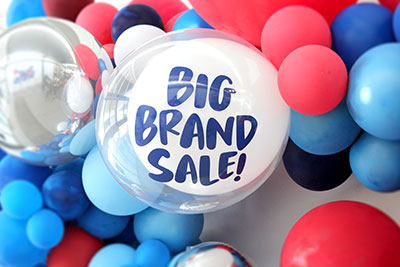
A name is a very important piece of the business and the shorter you can get it, the more memorable it will be. That’s why you have companies like Home Depot or Lyft or Uber so focus on creating a name that is short, memorable, and unique. But you don’t want to make it too unique; there are a lot of companies that are going with weird spellings like “Phoenix” and they spell it F-E-N-I-X-Y and all these crazy characters and names. You don’t want to get too creative and too unique because then it will be hard for people to find or spell.
So try not to do that too much. It’s been a common thing in the last decade or so for companies to use funny spellings for their names, like Fiverr or Lyft. However, you can do that if you have a short name. But the longer you get and the more creative you try to get with coming up with funny characters in your name, it’s going to be harder for people to find you. So keep it short, keep it unique, and make it meaningful.
#18 Law of The Generic
The 18th law of branding is the law of specificity. A generic name can be doomed to failure, so find a non-generic name. Something like “Plus Plumbing” is not a unique name and it’s not going to stand out from the crowd. A name like “Crunchy Cottage” is incredibly unique. One of the things I did with my company was incorporate myself, which is why it was called Adrian Agency. I never intended it to be a big, public-facing brand but because people liked me and I provided amazing service and a quality end product, they gave me their business.
I was able to build an identity and a brand around my personal name, which is why I’ve been able to create the sub-brands like Adrian Domains and Adrian Agency off of that. I’ve built a really good reputation, so find a name that’s not generic find something that’s memorable and personal to you, something that people will recognize and it’ll stand out from the crowd. I can’t tell you how many All-Americans or A-Plus or Elite companies use that name element, so don’t use a generic name find something specific and unique to you.
#19 Law of Company
The 19th law of branding is the law of company separation. Your company name and your brand name are probably different, and this is an important distinction to make. My company name is not Adrian Agency anymore – it’s Adrian Agency. As your business grows bigger, you’ll need to create a separate entity to own your brand. Companies like Google do this – the main company that owns Google is called Alphabet.
So you want to make sure that if you’re going to build a big business and you’re going to have multiple sub-brands and a family of brands, you actually have a company name that’s separate from your brand name. This is really important. A lot of large companies do this, and this is something that you want to consider doing with your brand if you plan on taking this huge and someday exiting that brand. Making sure that you have a holding company that actually owns the main brand name that the public sees.
#20 Law of Change

Be aware of the changes happening to your industry, and not just stand against them. It’s okay to do that sometimes in specific areas when it comes to technology. This is an area where you’re probably going to want to go along with technology, as it is advancing very quickly and it’s hard to keep up with. But it’s important that you do because technology is going to move and so are the future generations with it. So, so you don’t lose your customer base and become obsolete, you really need to understand that the law of change is inevitable and you need to adapt and evolve with it.
#21 Law of Mortality
The last law of branding is the law of mortality. All brands will die and need to be reinvented. There are dozens and dozens of examples of companies that have done that over the years. Bonnie Plumbing is a very good example of that after a certain amount of time when that company was acquired, the face of Mark and Candace just was no longer going to work so they needed to rebrand the entire company because it was owned by new people and Mark and Candace were no longer part of that.
Just like if I were to sell my company, Adrian Agency, they would have to rebrand and make it less about me and more about the team or the people or what they’re doing as a company, differently once they buy it. So it’s really important that you understand that all brands have a mortality rate and if you don’t evolve and change and make them better over time, they will die.
That’s the last thing you want to do after putting all your hard work into something. Can you imagine the people who started Toys “R” Us or Blockbuster having to give up their brand because they decided to be stubborn and not evolve and change with the times, not reinvent themselves? They totally could have reinvented themselves. Blockbuster is a great example of that. You need to reinvent yourself with all the technology that’s happening.
Final Thoughts on Branding for Business
